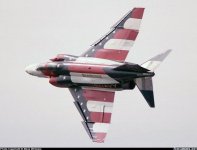-
There seems to be an uptick in Political comments in recent months. Those of us who are long time members of the site know that Political and Religious content has been banned for years. Nothing has changed. Please leave all political and religious comments out of the forums.
If you recently joined the forums you were not presented with this restriction in the terms of service. This was due to a conversion error when we went from vBulletin to Xenforo. We have updated our terms of service to reflect these corrections.
Please note any post refering to a politician will be considered political even if it is intended to be humor. Our experience is these topics have a way of dividing the forums and causing deep resentment among members. It is a poison to the community. We appreciate compliance with the rules.
The Staff of SOH
-
Please see the most recent updates in the "Where did the .com name go?" thread. Posts number 16 and 17.
You should upgrade or use an alternative browser.
SimWorks Studios F-4B Phantom II
- Thread starter SiR_RiPPER
- Start date
SiR_RiPPER
Members +
Ian Warren
Charter Member

panos
Members +
With Christmas within reach, we are starting a 20% sale, starting on December 18th and ending on Midnight January 1st GMT! This will be our last sale before v1.0 release which is at last on the horizon (unlike a Christmas break). The discount code "phireplace" will tell Santa where to leave your gift!
Back to the aircraft, we can now show you some samples of the later F-4 models and illustrate the differences. Read the captions for details!
There is a total of nine different ECM gear pieces that you can use to customise your Phantom. This will allow potential repainters to create the exact phantom they saw on their reference pictures when they create the aircraft.cfg entries. Obviously, the simmers will be able to do the same thing.
Thus you will be able to create a lot of F-4B and F-4N variations to your heart's content!
Additionally, there are two flight models for the aircraft. The one you currently have resembles an early F-4B. Soon you will also get the F-4N flight model. The latter has drooping ailerons and slotted stabilators (the slat visible on the stabilators in the "smiley" image). What these did was reduce approach angle of attack by about 0.5 units and airspeeds by 6-7 knots. This change was tested on the last F-4B and applied henceforth to the F-4J, Air Force Phantoms and retrofitted to all Phantoms produced so far.
We hope you enjoyed this update! Keep an eye here for more news soon!




Thanks,
Panos
- Is this a beta still or a finished product?
- Why when I go to the web site it does not show the sale price?
- Is SWS now in partnership with MILVIZ (thought these were rival products) or is the MILVIZ logo I see on the SWS page mischievous advertising?

- As a die hard USN Phantom Phan, is this the one to have?
Thanks!
SiR_RiPPER
Members +
1. It is in its final beta version
2. The listed price is unchanged. You can use the discount code on checkout to get the discounted price.
3. The two F-4s are different products but share some technology -we cooperated on some parts of our Phantoms, thus we are displaying their logo as part of the deal.
4. You know what I'd answer on this one!
Attachments
dhazelgrove
Charter Member

F-4Bs, or any F-4s that I recall. had an INS However, I agree some type of independent NAVAID like an INS or GPS popup will make flying a more enjoyable experience rather than dead reckoning all over expanses of ocean looking for a TACAN site.
Of course there's an INS in the back seat.
Dave
This change [drooped ailerons and slotted stab] was tested on the last F-4B and applied henceforth to the F-4J, Air Force Phantoms and retrofitted to all Phantoms produced so far.
Hmmm...I'll have to search out that "fact". News to me.
(the slat visible on the stabilators in the "smiley" image)
I think you meant "slot" , not "slat".
Gene K
SiR_RiPPER
Members +
Hmmm...I'll have to search out that "fact". News to me.
Gene K
In fact it was tested in F-4Bs of Block 26z, after which the slotted stab started being applied on the production line F-4B's (1966-67). Before that it was 3xLE, 1xTE flaps, no slotted stabilators.
Along with these F-4Bs, the first of which served as testbeds, all F-4Js rolled out of production with that modification. Then the older F-4Bs and Cs started being retrofitted with it and it became the standard until the slatted E & S came out -bringing the advantages you know first hand.
I think you meant "slot" , not "slat".
Gene K
I was curious as to why this tail addition is called a "slot", because it looks like a slat. Is there a difference other than not being retractable?
SiR_RiPPER
Members +
What happens if you buy the current near final beta and then the v 1.0 is released? Do you keep getting free updates?
That is a question that pops up often and is an important one. I'll be straight and unmarketable:
Beta buyers will definitely receive the F-4B and N version 1.x. Buying the product in beta means that you knowingly buy the product in a state which is not 100% complete and up to the final standard.
In return you are receiving the aforementioned product in its current state. The developer agrees that you will receive all updates up to and including the completed version, as well as any updates after that, of course. The only difference is that you are just buying it ahead of its final version and support the developer with your trust and wallet.
The above is common practise for all early access/open beta products, including our Phantom, unless explicitly stated otherwise by the publisher/developer.
Naruto-kun
Charter Member
SiR_RiPPER
Members +
- Input your current coordinates
- Input where you want to go
- Input magnetic variation
- Input wind direction and heading
- Fly
- The Earth's magnetic variation changes during the route (always the case)
- The wind changes some point along the route (also always the case)
Then the older F-4Bs and Cs started being retrofitted with it and it became the standard until the slatted E & S came out ... .
I'm familiar with Project Bee Line which older F-4Bs underwent to modify the Leading Edge flaps, add drooped ailerons, and use slotted stabs. However, I was not aware of a similar program for the USAF except for early models getting the inboard LE flaps fixed, and (some) drooped ailerons. However, I don't recall any early USAF Phantoms (F-4C or D) getting the slotted stabs. All to say part of what was quoted originally was new to me, and I definitely need to do some cranial refreshing.
I was curious as to why this tail addition is called a "slot", because it looks like a slat. Is there a difference other than not being retractable?
In general, "slats" are moveable, "slots" are not (yes, there were a couple of test models that had fixed LE slats, for example the BiCentennial YF-4J which was an F-4J with B radome and fixed LE slats (not same as on the F-4S).
Gene K
Attachments
SiR_RiPPER
Members +
In general, "slats" are moveable, "slots" are not (yes, there were a couple of test models that had fixed LE slats, for example the BiCentennial YF-4J which was an F-4J with B radome and fixed LE slats (not same as on the F-4S).
Gene K
That answered my question! Thanks!
dhazelgrove
Charter Member


The latest build.
Dave


